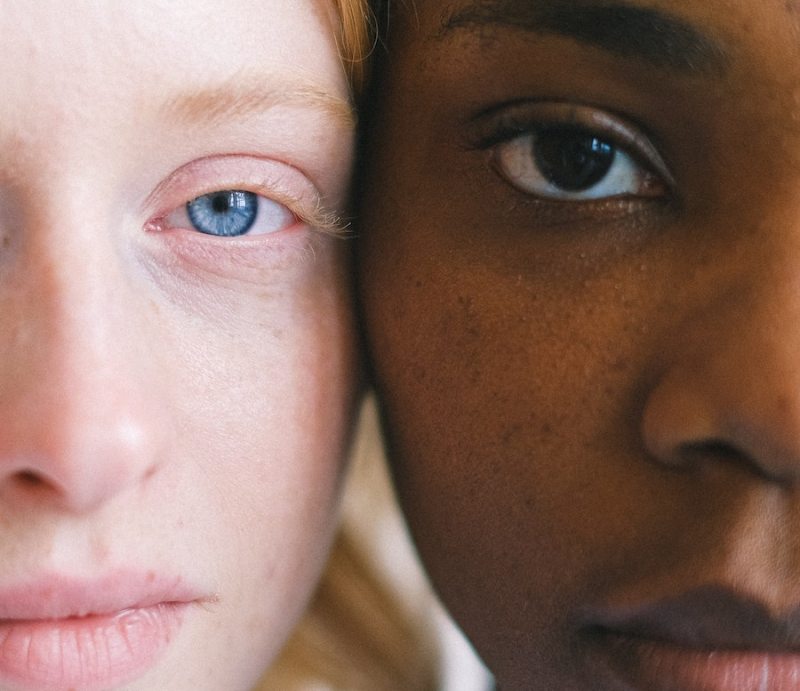American society has transformed in so many ways over the past couple centuries. Though similarities remain, huge portions of our culture look nothing like they used to. And, mostly, these changes have been for the better.
One such positive, massive shift has been in the realm of dating. Specifically, interracial dating.
Along with evolutions in the culture of romance and racial dynamics, interracial dating has changed dramatically in the recent decades and centuries. In many ways, it has reflected broader societal trends. And it demonstrates how far we’ve come when it comes to racism, racial bias, and racial justice. But it also continues to reveal that we’ve still got a ways to go.
The History of Interracial Dating

It would take a whole book to explore the full history of interracial dating and marriage. But there have been some key aspects, events, and changes that have occurred over time in the United States.
“Miscegenation” is defined by Merriam-Webster as the following:
“: a mixture of races
especially: marriage, cohabitation, or sexual intercourse between a white person and a member of another race
NOTE: The word miscegenation is associated especially with historical laws against interracial marriage. In the United States, such laws were declared unconstitutional in 1967.”
American anti-miscegenation laws were first created back in the 1600s when slave-holding colonies such as Maryland and Virginia wanted to prevent Black people from marrying white people. These kinds of laws persisted for generations.
California was the first state to repeal its anti-miscegenation laws, in the 1940s. Many other states followed suit in the 1950s and 1960s. But toward the end of the ’60s, the entire south had still not managed to repeal these interracial banning laws. Then, the most famous American interracial marriage legal civil rights decision was made.
Loving v. Virginia was a case in which Mildred and Richard Loving, a black woman and a white man, living in Central Point, Virginia, traveled to Washington, D.C. to bypass their own state’s anti-miscegenation laws and get married. Upon returning to Virginia, they were charged with miscegenation, still—incredibly—classified as a felony.
After being convicted, they began an appeal process, which led them all the way to the United States Supreme Court. As summarized by the National Constitution Center, the Supreme Court ruled that “the Equal Protection Clause required strict scrutiny to apply to all race-based classifications.
Furthermore, the Court cited the Due Process Clause and concluded that the law was rooted in invidious racial discrimination, making it impossible to satisfy a compelling government interest.” In other words, the law was ruled unconstitutional, and anti-miscegenation laws were struck down across the south.
Though this 1967 decision feels, in some ways, like a long time ago, in other ways, it was remarkably recent. And, while the dynamics of interracial marriage don’t always apply directly to all kinds of interracial dating, the history of interracial marriage in this country tells us a great deal about the perceptions and practices of interracial dating throughout the lifespan of the United States.
Interracial Dating in 2021

In the years since Loving v. Virginia, rates of interracial marriage have risen pretty steeply. According to a report by the Pew Research Center, 3% of newlyweds in 1967 were married to someone of a different ethnicity or race, while that number had risen to 17% by 2015. Approximately 10% of all marriages are now interracial.
Interracial dating has also been on the rise. And, aside from it just being more commonplace, views surrounding dating across races have changed drastically in the past 50 years. The vast majority of Americans are not opposed to themselves, their family members, or others dating interracially.
However, this doesn’t mean that prejudices and biases surrounding this issue have vanished. Even if most of us would say that we aren’t opposed, talk to anyone who’s dated interracially, and they likely have an anecdote or two in which race became a point of tension—for the couple or others—over the course of the relationship. Sometimes, that might involve active racism. But just as often, navigating racial dynamics in and of itself is a thing that must be addressed, sometimes again and again and again.
Navigating Interracial Relationships

Each person and couple is different, but often the best way to approach these dynamics is head-on.
Open-mindedness, communication, honesty, and vulnerability are all essential components of any relationship. But these qualities can be all the more important in an interracial relationship. Many people find that staying aware of racial dynamics, current events, and conversations helps immensely. For some, this was illustrated vividly in 2020 and 2021, with heightened visibility of racial injustice brought on by responses to police brutality against people of color.
But these conversations, empathy, and efforts toward cultural understanding should be happening all the time—not just when Black Lives Matter is in all the headlines.
Racial disparities exist. Racial identities existed. Racism exists. Discrimination exists. These are all realities in the United States, and those realities don’t evaporate in the confines of a relationship. Different people of different races have different life experiences, and exploring and confronting these differences can both deepen the relationship and enhance broader understanding.
